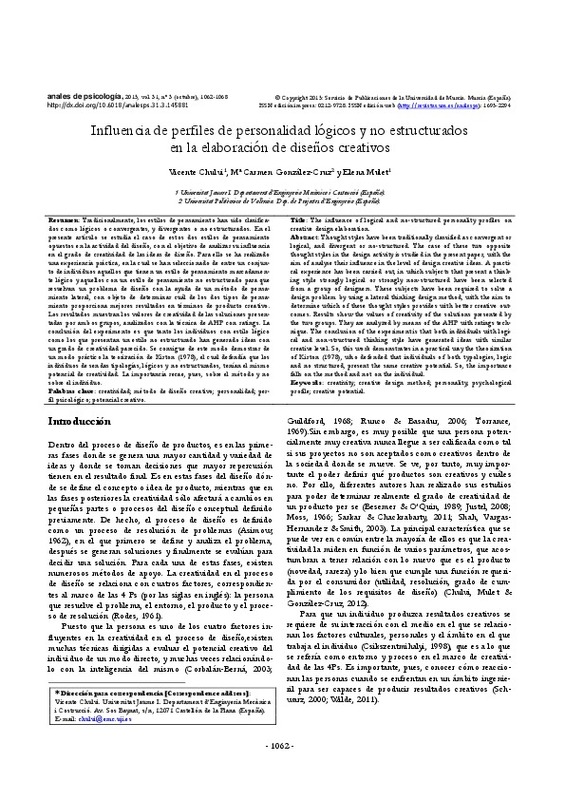JavaScript is disabled for your browser. Some features of this site may not work without it.
Buscar en RiuNet
Listar
Mi cuenta
Estadísticas
Ayuda RiuNet
Admin. UPV
Influencia de perfiles de personalidad lógicos y no estructurados en la elaboración de diseños creativos
Mostrar el registro completo del ítem
Chulvi, V.; González-Cruz, MC.; Mulet, E. (2015). Influencia de perfiles de personalidad lógicos y no estructurados en la elaboración de diseños creativos. Anales de Psicología. 31(3):1062-1068. doi:10.6018/analesps.31.3.145881
Por favor, use este identificador para citar o enlazar este ítem: http://hdl.handle.net/10251/63905
Ficheros en el ítem
Metadatos del ítem
| Título: | Influencia de perfiles de personalidad lógicos y no estructurados en la elaboración de diseños creativos | |
| Otro titulo: |
|
|
| Autor: | Chulvi, Vicente Mulet, Elena | |
| Entidad UPV: |
|
|
| Fecha difusión: |
|
|
| Resumen: |
[ES] Tradicionalmente, los estilos de pensamiento han sido clasificados
como lógicos o convergentes, y divergentes o no estructurados. En el
presente artículo se estudia el caso de estos dos estilos de pensamiento
...[+]
[EN] Thought styles have been traditionally classified as convergent or
logical, and divergent or no-structured. The case of these two opposite
thought styles in the design activity is studied in the present paper, with ...[+]
|
|
| Palabras clave: |
|
|
| Derechos de uso: | Reconocimiento - No comercial - Sin obra derivada (by-nc-nd) | |
| Fuente: |
|
|
| DOI: |
|
|
| Editorial: |
|
|
| Versión del editor: | http://dx.doi.org/10.6018/analesps.31.3.145881 | |
| Tipo: |
|









